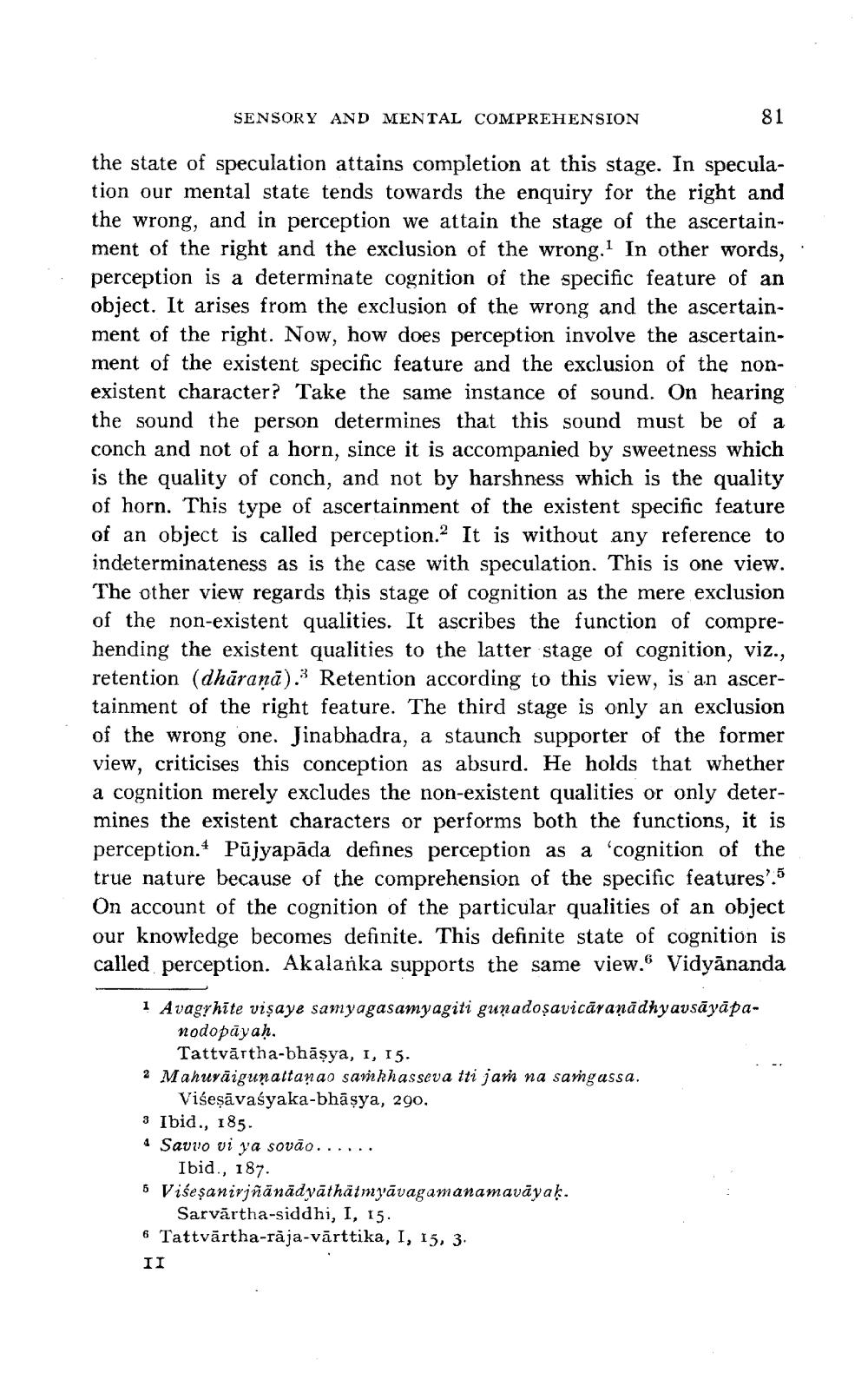________________
SENSORY AND MENTAL COMPREHENSION
81
the state of speculation attains completion at this stage. In speculation our mental state tends towards the enquiry for the right and the wrong, and in perception we attain the stage of the ascertain
right and the exclusion of the wrong. In other words. perception is a determinate cognition of the specific feature of an object. It arises from the exclusion of the wrong and the ascertainment of the right. Now, how does perception involve the ascertainment of the existent specific feature and the exclusion of the nonexistent character? Take the same instance of sound. On hearing the sound the person determines that this sound must be of a conch and not of a horn, since it is accompanied by sweetness which is the quality of conch, and not by harshness which is the quality of horn. This type of ascertainment of the existent specific feature of an object is called perception. It is without any reference to indeterminateness as is the case with speculation. This is one view. The other view regards this stage of cognition as the mere exclusion of the non-existent qualities. It ascribes the function of comprehending the existent qualities to the latter stage of cognition, viz., retention (dhāranā).Retention according to this view, is an ascertainment of the right feature. The third stage is only an exclusion of the wrong one. Jinabhadra, a staunch supporter of the former view, criticises this conception as absurd. He holds that whether a cognition merely excludes the non-existent qualities or only determines the existent characters or performs both the functions, it is perception.4 Pujyapāda defines perception as a 'cognition of the true nature because of the comprehension of the specific features: On account of the cognition of the particular qualities of an object our knowledge becomes definite. This definite state of cognition is called perception. Akalanka supports the same view.6 Vidyānanda
1 Avagyhīte vişaye samyagasamyagiti gunadoşavicāraṇādhyavsāyāpa
nodopāyaḥ.
Tattvārtha-bhāșya, 1, 15. 2 Mahurāigunaitanao savrkhasseva tti jan na sangassa.
Viseşāvaśyaka-bhāsya, 290. 3 Ibid., 185 4 Sauvo vi ya sovão......
Ibid., 187. 5 Visesanirjñānādvāthātmyāvagamanamavāyak.
Sarvārtha-siddhi, I, 15. 6 Tattvārtha-raja-vārttika, I, 15, 3. II




